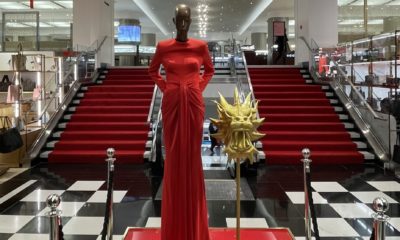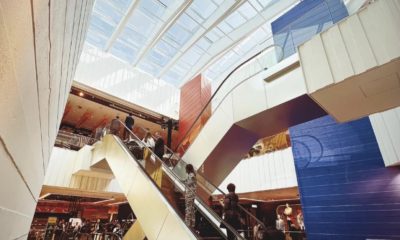AS SANTA PREPARES his sleigh and polishes Rudolph’s nose, New York City is aglow with light. The trees are garnished with filigrees of luminous ribbon and shimmering garlands embellish storefronts, facades and open-air spaces. Somehow, the lights appear so much brighter this year now that we seem to be crawling out from under the dark cloak of the pandemic.
Returning to restaurants, ballfields, and even the bright lights of Broadway, I’m reminded of my last visit to the Metropolitan Opera at Lincoln Center to see a production of Tchaikovsky’s Swan Lake, one of my favorites. As the clock neared 8:00 p.m., anticipation began to grow among those in attendance. Whether seated in the orchestra or in the upper tier nearest to the gold leaf ceiling, the sparkling chandeliers cast a dim but even glow over the anticipatory crowd. And then as the orchestra began its overture, the crystal chandeliers magically rose upward in perfect syncopation to the music. To the wonderment of all, as the chandeliers climbed through the space above, the light that they cast dimmed in wondrous harmony with the timbre and tone of the music. When the lights darkened, the emotions within the audience began to rise.
I have long held the view that music is the highest form of art due to its inherent ability to instantly move emotion. After all, mere craft enters the realm of art when it arouses an emotional response. Light, dim or bright in tone has that same effect. Though there may very well be that proverbial “light at the end of the tunnel” as retail recovers from months of darkness, there’s still a long road ahead as we confront the many changes that we all face due to the harsh hand of the pandemic. Adapting to change should be practical rather than theoretical, particularly when faced with new technologies and existential provocation such as the vice-like grip of a worldwide pandemic.
Nothing in retail design should be haphazard or random. In reacting to the conditions of the day, we must modernize and transition into the next chapter of retail’s ever-changing story. It should be remembered, however, that retail then, now and in the future, is theatrical in nature, presenting entertainment and even drama through the art of visual merchandising. Though retail remains a thespian-like endeavor, it must be noted that the production and the narrative of subsequent performances have changed forever. Physical stores are the stages, and websites and branded apps are the soapboxes of communicative entertainment. People will react to the barker on the soapbox; mobile devices are the new storefront enticements. When the curtain begins to rise once again on retail stages across the globe, the message is the brand, and the medium is the many touchpoints, whether virtual or tactile, for the customer to engage. As customers eagerly and cautiously flock back to the theatrical performances on brick-and-mortar retail stages, it must be noted that theater without the footlights, isn’t really theater at all.
Much like music elicits an emotional response, lighting, whether ambient, highlight, task or decorative (architectural jewelry), communicates a distinct feeling to shoppers, and is one of the unsung heroes in any successful retail environment. At the end of the day, lighting is the icing on the cake. I’ve watched stores spend millions of dollars on renovations, and even more on new builds; but if the lighting isn’t right, they’ve wasted their money.
When purposefully designed, a reflected ceiling plan, or lighting scheme, creates drama and experiences that will move customers’ emotions and moods. When conceived with a skilled hand, effective lighting will not only move emotion, but also direct customer traffic through and around the environment while communicating important fashion philosophies and product commitments. While the physical store is a tool of communication, the vernacular of lighting is the paint that colors retail theater.
Advertisement
The eye is naturally attracted to bright light. Much in the way that light brings quality to any retail environment, it also opens eyes to past transgressions and illuminates the way forward. Light has finally been shed on retail’s wasteful and dehumanizing ways. As we emerge from the dark days of the pandemic, it should be noted that the path to a brighter future is to design sustainable stores for human consumption, interaction, health, safety and welfare. We all shudder at the effects of Covid, yet there is a new beacon in its wake that, if processed correctly, will not only move our emotions, but will also direct us to a much brighter future. Let there be light…

 Photo Gallery1 week ago
Photo Gallery1 week ago
 Headlines7 days ago
Headlines7 days ago
 Headlines1 week ago
Headlines1 week ago
 Headlines2 weeks ago
Headlines2 weeks ago
 Headlines1 week ago
Headlines1 week ago
 Designer Dozen2 weeks ago
Designer Dozen2 weeks ago
 Designer Dozen5 days ago
Designer Dozen5 days ago
 Headlines7 days ago
Headlines7 days ago





















